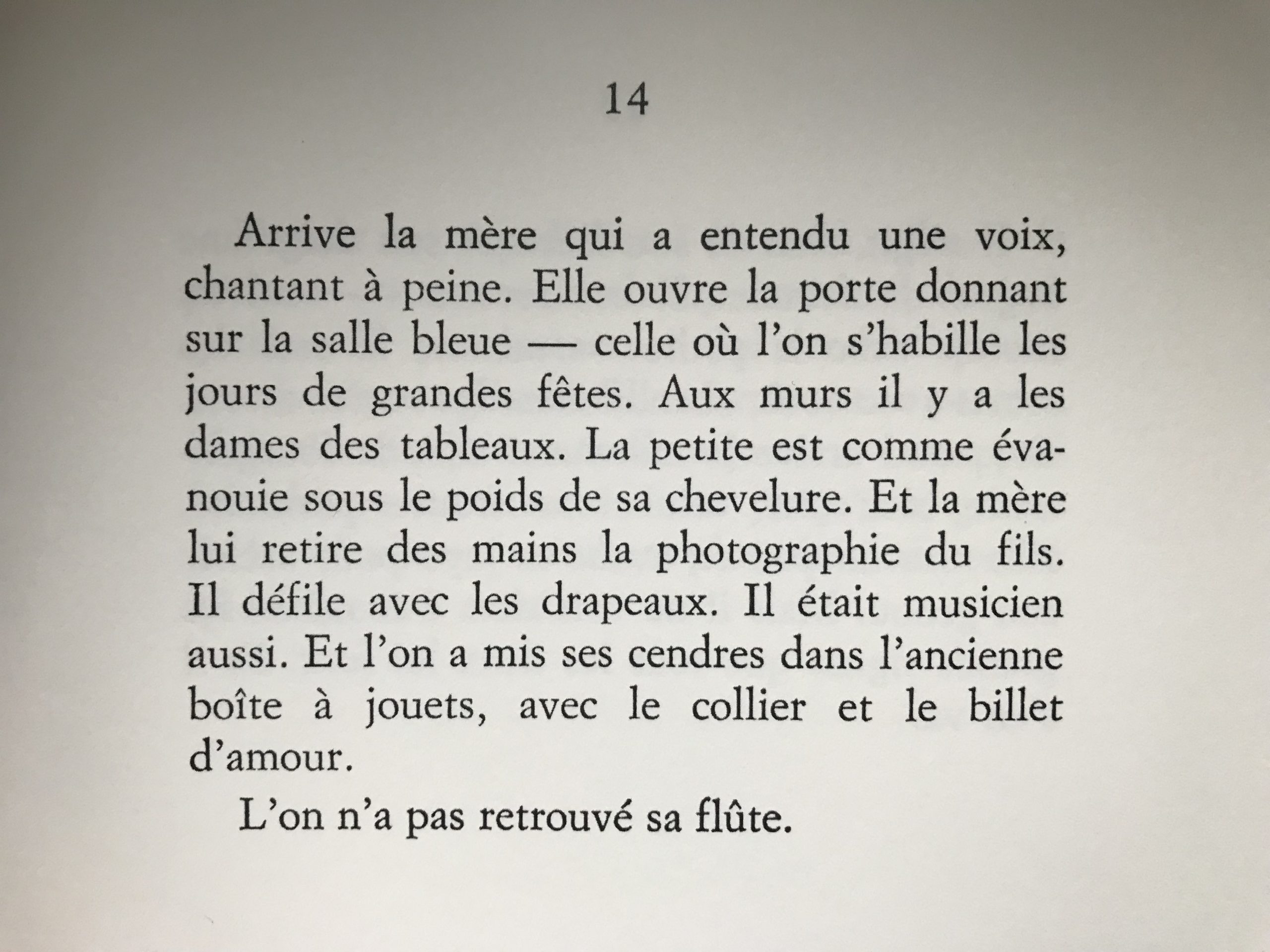Simple words in golden dress
The poetry of François Berger recalls the softness of the ponds reflecting the smoothness of the clouds and the lascivious willows. Beneath the apparent serenity of their waters, a dark world stirs, which one guesses without ever seeing and whose plants, superb on the surface, take root in the mud. Lawyer well known in the Neuchâtel region, novelist published in Age of Man EditionsFrançois Berger, whose career in literature emanates above all from poetry, is a regular at literary prizes since he won the Louise-Labé Prize for memory of angelsa Distinction from the Schiller Foundation to Gestures of the Watcher, then the Auguste-Bachelin Prize. For Angel’s Journey, he received the poetic novel prize from the Society of French-speaking poets and writers. The first publication of the collection The Indians dates back to 1988 Editions Eliane Vernay, in Geneva. Out of print for years, it has just been reissued by Soleil d’Encre, embellished with the artist’s paintings. Isabelle Breguet. A book with the scent of fruits, morning kisses and love tickets, while the canvas of the Indians still remembers a young man parading under the flags.
François Berger is also a member of the European Cultural Society. Several of his works have been translated into Italian, Romanian, Macedonian, Greek and Arabic.
Interview: five questions for François Berger
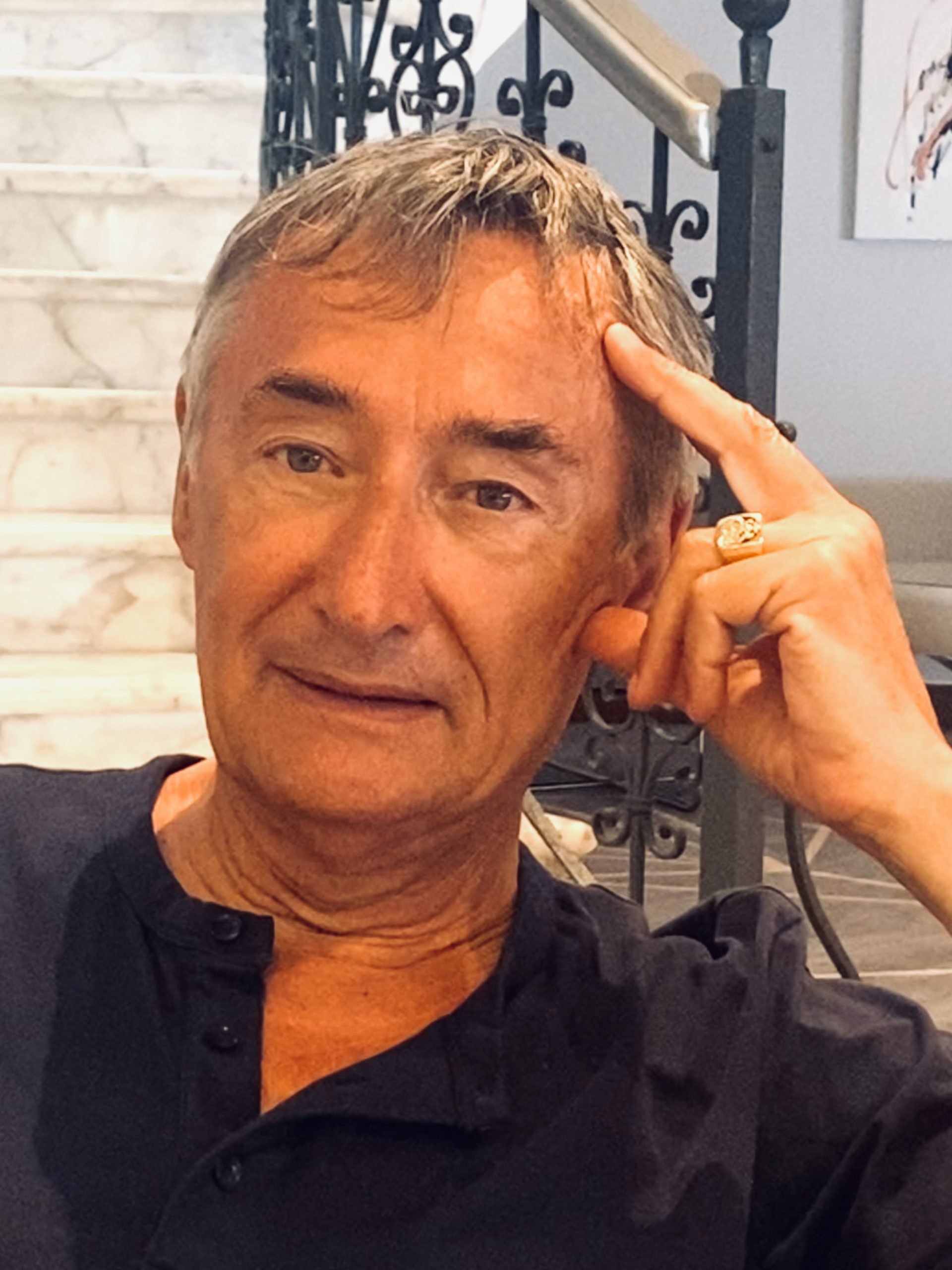 What motivated the republication of your collection of poetry Les Indiennes?
What motivated the republication of your collection of poetry Les Indiennes?
Friends, acquaintances and literary critics had encouraged me to republish it.
The encounter with the pictorial work of Isabelle Breguet, painter from Neuchâtel, who magnificently illustrated this book, was decisive.
Do you feel more like a poet, novelist, publisher or lawyer?
Since I closed my law firm in 2019 in Neuchâtel, after forty years of practice at the bar, I can obviously devote more time to novel writing.
Does this mean that I am more of a novelist than a poet, lawyer or publisher? The poet, the lawyer, remain present in my life and through a big novel that I am finishing, which is however not an autobiography but pure fiction, if indeed it can be pure. I also have editorial projects.
I will therefore answer that I feel like a novelist, poet, lawyer and publisher all at the same time, even if the activity of novelist occupies me more than before. The time invested in a job is not the only criterion for judging its importance. However, I must admit to being more of a novelist since the closure of my study.
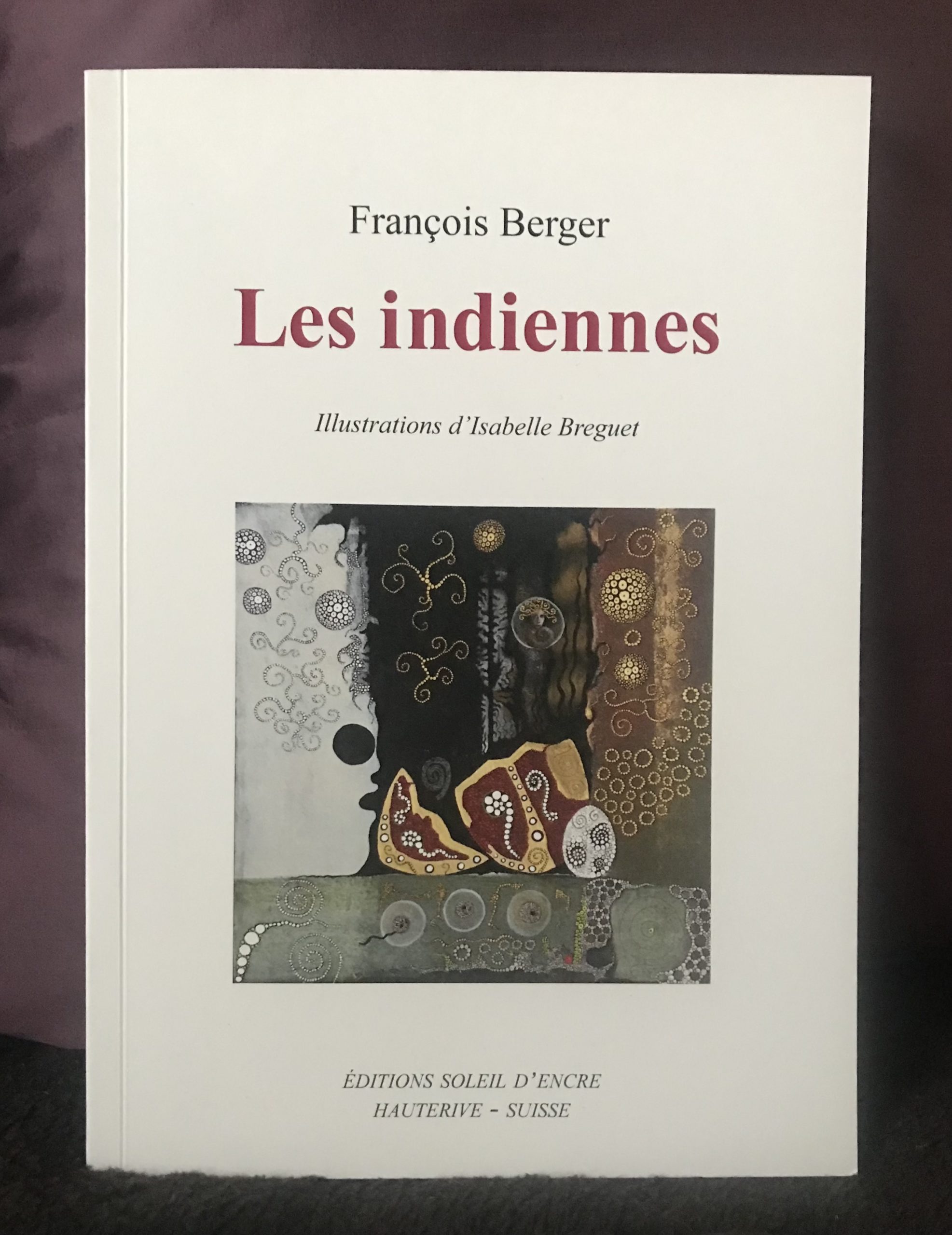 Are the poems in this collection a homage to the textile industry that made Neuchâtel the heyday of the 18th and 19th centuries?
Are the poems in this collection a homage to the textile industry that made Neuchâtel the heyday of the 18th and 19th centuries?
If there is homage, then it is discreet! My first sources of inspiration leading to the writing of Indian were certainly the canvases of Neuchâtel Indians. However, we find ourselves here in the presence of a story in poetic prose, freely written and in no way documentary, even if certain terms are directly borrowed from the textile industry of the time.
What publishes Soleil d’Encre, your publishing house ?
Soleil d’Encre’s main purpose is the re-edition of great literary texts (novels, poetry), but also philosophical ones. It is above all about writings that are insufficiently known or somewhat forgotten and deserve to be discovered or rediscovered. In particular, the excellent Aphorisms of the Vaudois psychiatrist and humanist Oscar Louis Forelknown and less known texts by Paul Valéry, gathered under the title of one of them: The Crisis of the Mind.
Has been reposted Imagoa novel by the only Swiss Nobel Prize winner in literature (1919) from Basel Carl Spitteler, on the occasion of the hundredth anniversary of the awarding of the Prize. I was the only one, in 2019, in French-speaking Switzerland, to republish a novel by Spitteler, translated into French.
At the end of 2021, my publishing house relaunched a philosophical essay by the writer and essayist Claude Frochaux, human order, and this with the kind authorization of the editions Gallimard.
Just recently reposted The Indians given that the book was out of print and that it is the result of joint work between the author-publisher and the Neuchâtel painter Isabelle Breguet who illustrated it.
In which literary character would you like to be embodied?
I will answer: The narrator ofIn Search of Lost Time of Proust, who is a literary character in his own right. His interests are multiple, among others painting, architecture, music, nature. He depicted, with an artistic and analytical power never equaled since, in French literature, the mores of his time, love, jealousy, passion, hypocrisy and the perversity of the human soul. So he is a universal character.
Interview: five questions for Isabelle Breguet
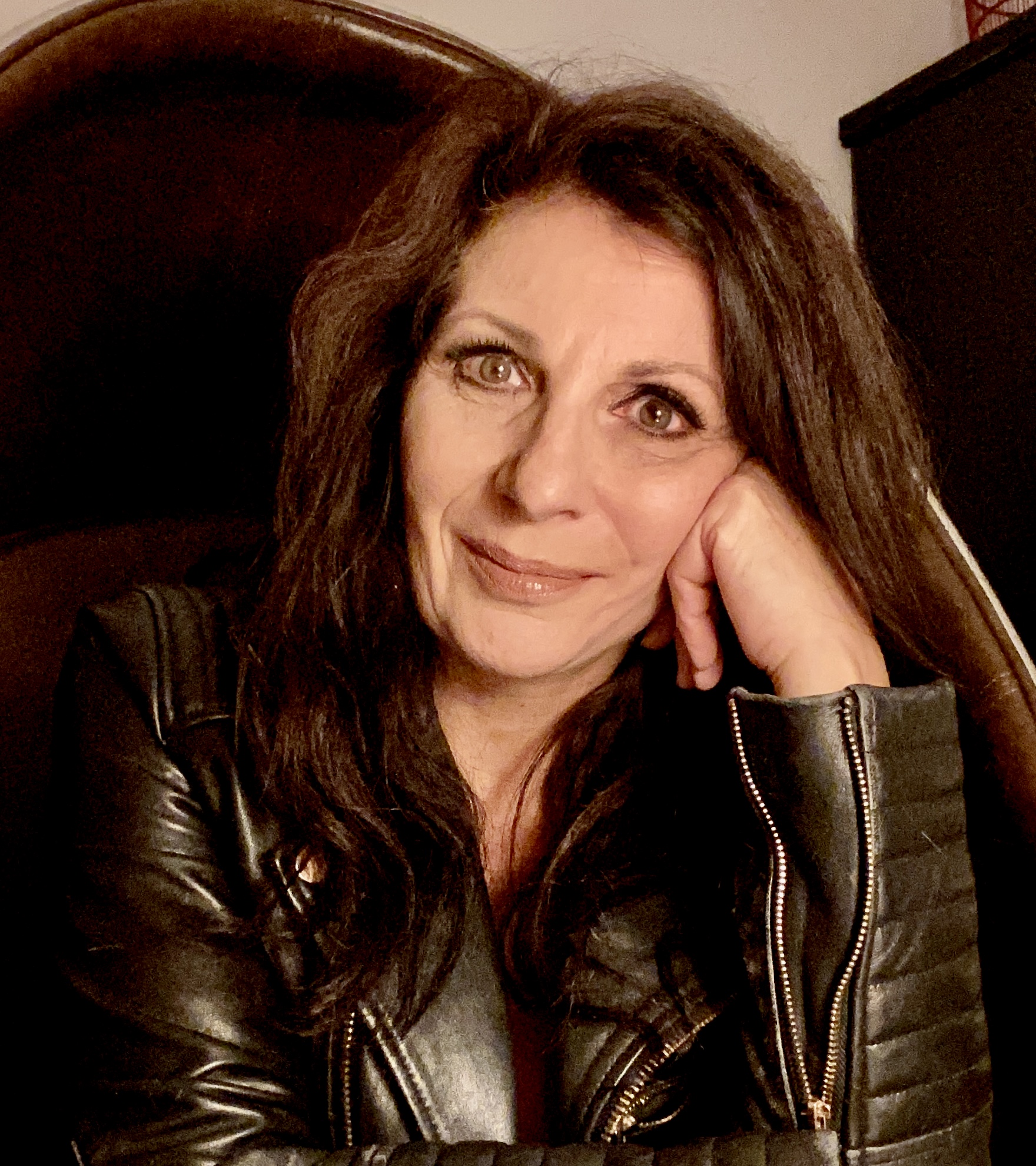 What is your painting inspired by?
What is your painting inspired by?
Interested in the atmosphere of cabinets of curiosities since my childhood and passionate about art in general, stones, nature, plants, mosses and lichens, it is naturally that my work is inspired by them. If I have to describe what is the style of my art, I would rather say surrealism, mixing abstract, vanitas and “points of paint” or Aboriginal dot painting, small dots of paint placed on the canvas with the tip of a small wood, in the manner of the Australian Aborigines. My favorite themes: the egg, love and life!
Main actor on a large majority of my paintings, the egg is a metaphorical symbol of the germ, embryonic mystery of a life in the making. Its, or rather one should say, its many forms, depending on the identity and nature of its content, make it the inexhaustible source of my inspiration. Without ever making any plans beforehand, this “actor” will invite himself onto the canvas, once a background has seen my first nuances define the limits of the stage.
The eye then lets itself be drawn into strata and deep fissures, animated by a teeming and bubbling life of cells of all sizes. A multitude of small dots, with or without a comma, bathed in an intercellular liquid, naturally find their ease there, in the water of the acrylic paint.
What links do you have with poetry?
Lover of words since always, I also write small texts in my spare time. In fact, I paint as I write and vice versa.
To paint is to write poetry with colors; then, the viewer is free to interpret the story, the radiance of emotions or the darkness of the spirit.
How did you choose the paintings that illustrate the book The Indians?
With François Berger, we first selected a number of vibrant and lively paintings that he particularly liked, then we made a choice based on the text and the resonances with my paintings.
Particularly present in your paintings, what is the pictorial role of gold in your work?
Gold, which represents fertility, preciousness of life, richness and rarity of the moment of happiness, is very present in my paintings; it is deliberately patinated, oxidized by the desire to give the idea of an evolution, of a maturation of the material and the impression that time has done its work!
I cannot mention gold without associating it with black and white, but also by analogy, with shades of gray depending on the lights of the chosen moment! Red and rust bring fire and energy.
Mysteries and chimeras hide in cracked or cracked walls, according to the canvases, in a universe with the patina of a past and present life, facing the destiny of an existence which only asks to tell its own story.
Spirals, circles, illuminations, the movement is permanent in an apparent silence.
But all this would be nothing without the soul’s true source of personal inspiration, through the brush. A permanent inner dialogue with one’s deepest being and a sincere gratitude for daily life which show us that we must know how to take advantage of the happiness of the present moment without forgetting to love ourselves!
As a red thread or stamp, a red dot. He is the clown’s nose, placed in each canvas like a focal point to make us smile!
If you were to be a character in a painting, who would you be?
Emilie Floege Gustav Klimt’s companion in painting The kiss ! This emblematic painting by Klimt alone represents the power of love and the present moment of a kiss where all the rest of the world no longer exists and no longer has any importance!
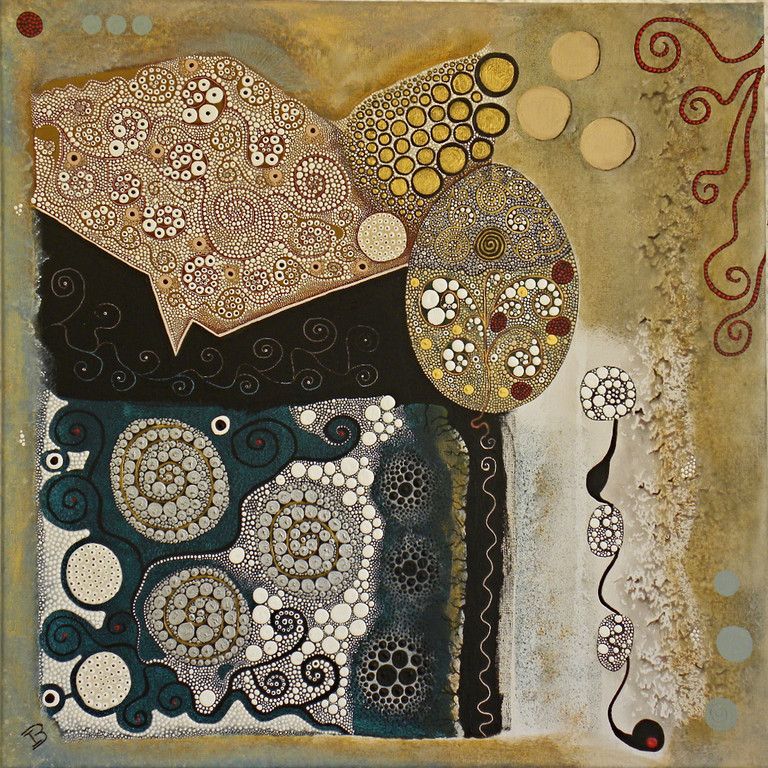
We want to give thanks to the author of this short article for this incredible material
A book of questions: “The Indians” by François Berger illustrated by Isabelle Breguet
Find here our social media profiles as well as other related pageshttps://nimblespirit.com/related-pages/

